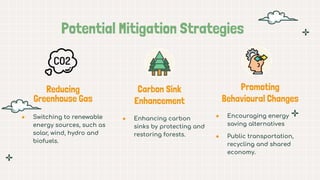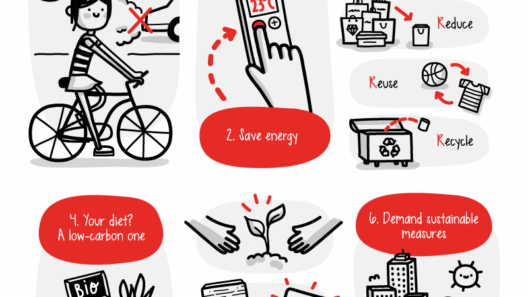Climate change is one of the predominant environmental issues of our time, with its repercussions manifesting in various forms across the globe. Understanding the root causes is essential for effectively addressing and combating this phenomenon. While many factors contribute to climate change, one significant and overarching culprit stands out: greenhouse gas emissions, primarily from human activities. This article explores the main causes of climate change, dissecting the roles of different sectors and the urgency for collective action.
Greenhouse Gases: The Culprit Behind Climate Change
Greenhouse gases (GHGs) are compounds in the atmosphere that trap heat, thereby contributing to the greenhouse effect. The most prevalent of these gases include carbon dioxide (CO2), methane (CH4), and nitrous oxide (N2O). Each of these gases has distinct sources and impacts, with CO2 being the most abundant and influential in terms of climate change.
Carbon Dioxide: The Major Offender
Carbon dioxide is primarily released through the combustion of fossil fuels such as coal, oil, and natural gas. This combustion process powers our electricity generation, transportation systems, industrial operations, and even residential heating. Deforestation exacerbates this issue, as trees that would otherwise absorb CO2 are removed. Thus, the excessive release of CO2 into the atmosphere is chiefly attributed to human industrial activities, reflecting a historical reliance on fossil fuels for economic growth and development.
Methane and Nitrous Oxide: Stealthy Adversaries
Methane, while less abundant than carbon dioxide, is an extremely potent greenhouse gas with over 25 times the warming potential over a century. The agriculture sector, particularly through livestock digestion (enteric fermentation) and agricultural waste management, is a major source of methane emissions. Moreover, natural gas extraction and transportation also contribute significantly, permitting methane to seep into the atmosphere.
Nitrous oxide is less well-known but equally alarming as a greenhouse gas. It mainly originates from agricultural practices, such as the application of synthetic fertilizers and the management of animal waste. The high global warming potential of nitrous oxide underscores the need for more sustainable agricultural practices that mitigate its release.
Human Activity: The Catalyst of a Global Crisis
While greenhouse gases are the central players in climate change, human activities—specifically, industrialization and urbanization—serve as the catalysts for their release. The surge in industrial activities post-World War II led to increased fossil fuel consumption, subsequently elevating CO2 levels in the atmosphere. The sprawling development of urban areas has also led to heightened energy demands, further intensifying the reliance on fossil fuels.
Transportation is another crucial facet of this narrative. The rise of personal automobiles, commercial freight, and air travel has significantly escalated fossil fuel consumption, contributing heavily to GHG emissions. Transitioning to alternative energy sources and promoting public transportation solutions is imperative to mitigate this impact.
The Role of Deforestation and Land Use Changes
Deforestation significantly contributes to climate change. Every year, vast areas of forests are cut down for timber, agriculture, and urban expansion. This not only releases the stored carbon dioxide in trees but also diminishes nature’s capacity to absorb CO2. Inefficient land-use practices exacerbate this issue, leading to soil degradation and less biodiversity, thereby impairing climate resilience.
The Interconnected Nature of Climate Change
It is crucial to recognize that climate change is not an isolated problem; it is intricately linked to social, economic, and political dynamics. Vulnerable populations, especially in developing nations, are disproportionately affected by climate change, accentuating issues of poverty, displacement, and inequality. Additionally, the resources required to combat climate change—such as funding for clean energy technologies and sustainable practices—are not equally accessible globally, leading to further inequities.
Global Efforts to Combat Climate Change
To address the multifaceted challenge of climate change, global cooperation and commitment to reducing greenhouse gas emissions are imperative. International agreements like the Paris Agreement aim to unite countries in their efforts to limit global temperature rise and enhance adaptive capacities. However, the actual implementation of these commitments varies widely, often falling short of necessary actions.
Renewable Energy: A Path Forward
Shifting from fossil fuels to renewable energy sources—such as solar, wind, and hydroelectric—represents a viable solution for reducing carbon emissions. Innovations in technology can drive this transition, maximizing energy efficiency and promoting greater sustainability. Governments, industries, and individuals must invest in research and development to harness these resources successfully.
Conclusion: A Call to Action
Understanding the main cause of climate change—greenhouse gas emissions stemming primarily from human activities—opens the door for actionable solutions. Collective awareness, policy changes, and individual responsibility can foster significant progress in combating this global crisis. The climate emergency demands a renewed sense of urgency and concerted efforts across all sectors of society. Only through unified determination can we pave the way toward a sustainable future, safeguarding our planet for generations to come.








